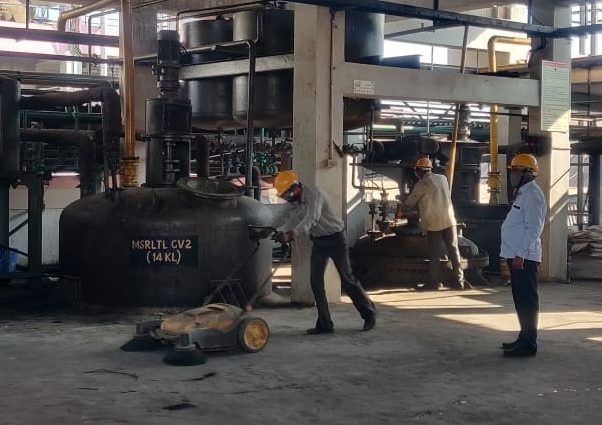TLI Staff
New Delhi: Indian economy entered into positive territory and reported 0.4% growth in October-December period of FY21 after two quarterly declines but it may still not be out of woods as pandemic risks persist.
With this, the real GDP has now returned to the pre-pandemic times of positive growth rates.
“It is also a reflection of a further strengthening of V-shaped recovery that began in Q2 of 2020-21, after a large GDP contraction in Q1 followed one of the most stringent lockdown imposed by government relative to other countries,” said a Finance Ministry statement.
The 2nd advance estimates has predicted GDP contraction of 8.0% in the current fiscal ending March 31.
While noting that policy measures taken by the government to counter the negative impact of Coronavirus pandemic on the economy were bearing fruits, the Finance Ministry was cautious in its reaction on the GDP numbers.
“India is not yet out of the danger of the pandemic. Social distancing continues to be the most effective tool to combat the pandemic as activity levels continue to rise in the economy boosted by the rapidly escalating inoculation drive in the country,” the Ministry said.
The positive GDP number has indeed stokes hopes of faster recovery but not all the experts consider true reflection of the economy given a large part of the economic activities are informal in nature. A sizable part of the micro, small and medium enterprises (MSMEs) also remain out of the national income estimation. Factoring in their state of financial health, the GDP could still be negative.
“If guesstimate of negative growth in MSMEs and informal sector is added to GDP, the GDP growth rate using Laspeyres Price Index Number will be -10% and not + 0.4%. Using Paasche’ Index it will be -15%,” renowned economist and Rajya Sabha MP Subramanian Swamy wrote on Twitter.
The government has maintained that the sharp V- shaped recovery has been driven by rebounds in both Private Final Consumption Expenditure (PFCE) and Gross Fixed Capital Formation (GFCF) as a combination of astute handling of the lockdown and a calibrated fiscal stimulus has allowed strong economic fundamentals to trigger quick resumption of high activity levels in the economy.
“While GFCF has improved from a contraction of 46.4% in Q1 to a positive growth of 2.6% in Q3, PFCE has recovered from a contraction of 26.2% in Q1 to a much smaller contraction of 2.4% in Q3,” it said.
Besides the overall uptick in the economy, the resurgence of GFCF in Q3 was also triggered by Capex in central government that increased year-on-year by 129% in October, 249% in November and 62% in December, 2020.
The Finance Ministry said that fiscal multipliers associated with capex are at least 3-4 times larger than Government Final Consumption Expenditure (GFCE) as capex induces much higher consumption spending than normal income transfers.
However, GFCE has played a critical role since April, 2020 as apart from supporting lives and livelihoods it provided the initial stimulus to the economy, it noted.
The Q3 GDP numbers are on expected lines given that gradual opening of the economy after nationwide lockdown is almost complete.
“The GDP growth of 0.4 per cent for the third quarter of FY’ 21 is no surprise, but it marks a significant turnaround into the Indian economy returning to a positive trajectory after sharp drops in the first two quarters, even as the war against Covid-19 is continuing, said Deepak Sood, Secretary General at industry body Assocham.
He said the services sector which contributes maximum to the GDP remained muted for the better part of the year 2020-21 and it is only in the last few months that the re-opening had started; the same should be reflected in the coming months.
With the roll out of vaccines against the Covid-19 picking up pace, we expect the services too catching up, he added.
Uday Shankar, President, FICCI said, “The positive albeit marginal growth reported in the third quarter of 2020-21 is indeed encouraging. The numbers are in line with the expectations and are reflective of the recovery being posted in most of the lead indicators. Going ahead, the roll-out of capital expenditure as announced in the Union Budget earlier this month should crowd in private investments and augurs well for overall economic revival.”

